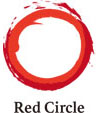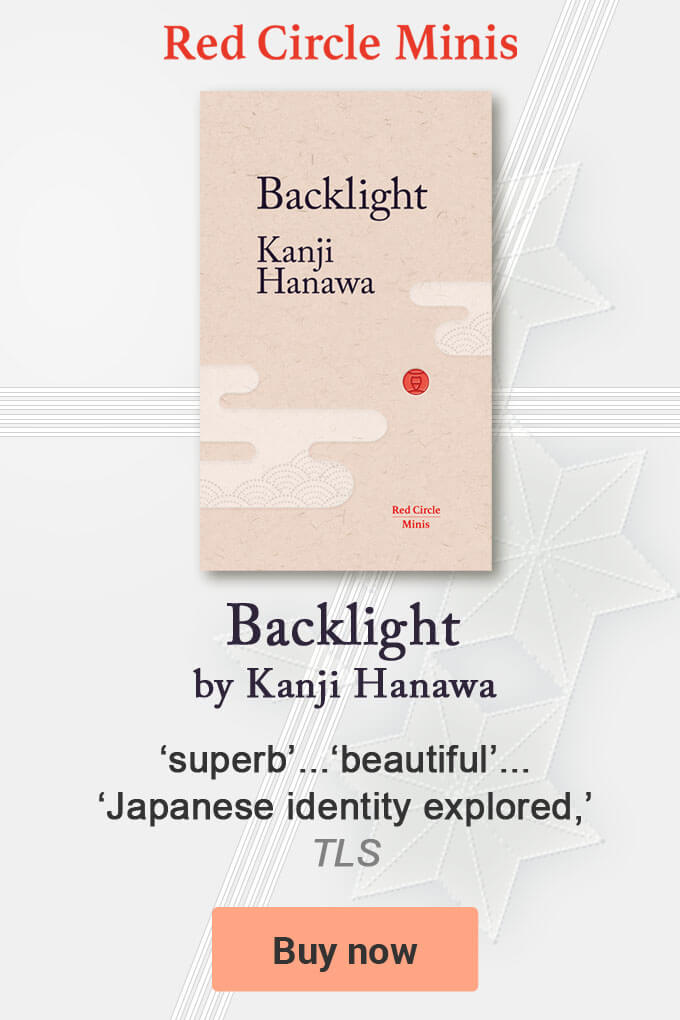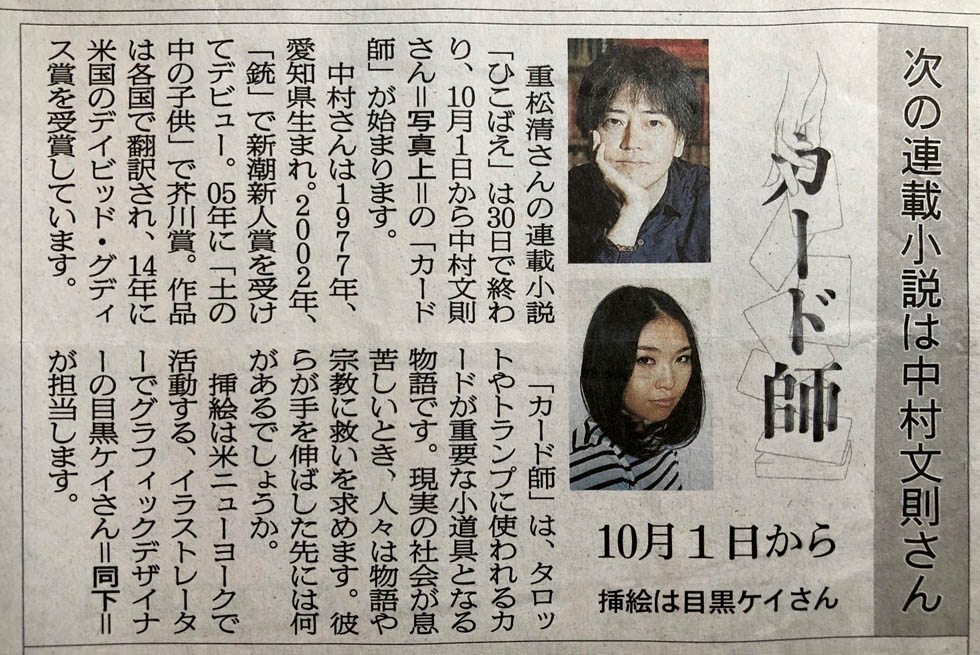 Announcement in the Asahi Shimbun of the forthcoming serialisation of The Card Shark by Fuminori Nakamura commencing 1 October 2019. Photo: Red Circle Authors Limited.
Announcement in the Asahi Shimbun of the forthcoming serialisation of The Card Shark by Fuminori Nakamura commencing 1 October 2019. Photo: Red Circle Authors Limited.It will take around a year for this new work from Nakamura, who is known for penning fast-paced narratives that hypnotically blend psychological suspense with literary fiction, to reach, what will no doubt be, a thrilling cliffhanging conclusion in the newspaper.
The first installment of Nakamura’s latest gripping story, which has playing cards – spanning tarot cards to poker and blackjack cards – as its central plot motif, was published on 1 October.
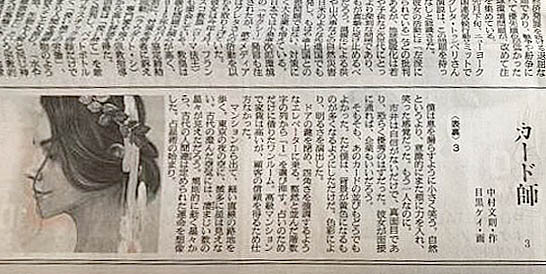 Third instalment of Fuminori Nakamura’s The Card Shark in the Asahi Shimbun. Photo: Red Circle Authors Limited.
Third instalment of Fuminori Nakamura’s The Card Shark in the Asahi Shimbun. Photo: Red Circle Authors Limited.Japan also has its own unique and colourful cards and enjoyable card games such as hanafuda. And it is predicted that the daily bite size chunks, published on weekdays, of Nakamura’s latest tale and the newspaper’s wide readership, an estimated 8 million, will help spark renewed interest in cards of all types – spawning many new enthusiastic Japanese card sharks of all ages.
To complement The Card Shark, new original illustrations by the highly regarded New York based Japanese graphic designer and illustrator Kei Meguro have been commissioned to run alongside the installments in the newspaper.
Card sharks, or cardsharps as they are also sometimes known, have provided both artists and writers with fascinating and intriguing subject matter for centuries. And Nakamura’s latest work promises to do likewise.
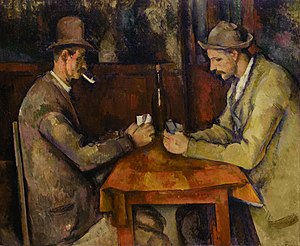 Paul Cézanne: The Card Players 1894–1895, Musée d’Orsay, Paris. Image: Wikipedia.
Paul Cézanne: The Card Players 1894–1895, Musée d’Orsay, Paris. Image: Wikipedia.In Japan, serialised novels have a long history and now play a very important and prestigious part in the professional lives of many leading Japanese authors; especially serialisations in such newspapers as the Asahi Shimbun, one of Japan’s most influential.
Japanese newspapers have supported creative writing and storytelling with prizes, newspaper novels and serialisation since the late 1880s. This latest Nakamura serialisation follows closely after the serialisation of The Fugitive also by Nakamura in several newspapers including the Tokyo Shimbun, and the Hokkaido Shimbun also newspapers with multi-million readership figures. This clearly highlights the high regard for and popularity of Nakamura and his prose in Japan. It is very unusual for an author to have two serialisations like this, back-to-back, in major newspapers.
Nakamura’s The Card Shark will be published in book format after the serialisation comes to an end in the newspaper next year. Even though Nakamura hasn’t actually finished writing the book yet, many industry insiders think Nakamura, sometimes dubbed the Japanese master of noire, is penning another blockbuster.
The Japanese language serialisation in the Asahi Shimbun of The Card Shark, by Fuminori Nakamura, and the illustrations by Kei Meguro, can be accessed here.
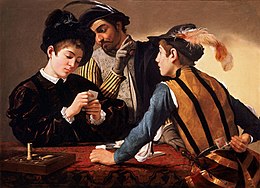 The Cardsharps by Michelangelo Merisi da Caravaggio (1571-1610) painted in c. 1594. Image: Wikipedia/ Kimbell Art Museum, Fort Worth
The Cardsharps by Michelangelo Merisi da Caravaggio (1571-1610) painted in c. 1594. Image: Wikipedia/ Kimbell Art Museum, Fort Worth About Red Circle:Red Circle Authors Limited is a specialist publishing and communications company that conducts bespoke projects on behalf of a carefully selected and curated group of leading Japanese authors. Red Circle showcases Japan’s best creative writing. For more information on Red Circle, Japanese literature, and Red Circle authors please visit: www.redcircleauthors.com.
About Red Circle:Red Circle Authors Limited is a specialist publishing and communications company that conducts bespoke projects on behalf of a carefully selected and curated group of leading Japanese authors. Red Circle showcases Japan’s best creative writing. For more information on Red Circle, Japanese literature, and Red Circle authors please visit: www.redcircleauthors.com.

